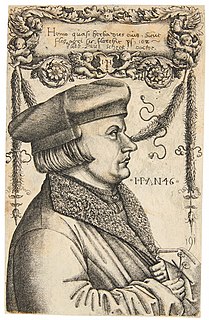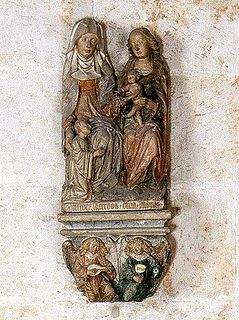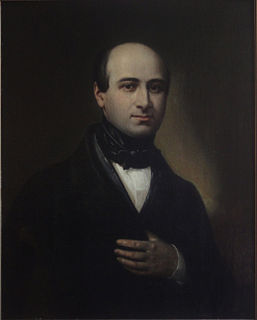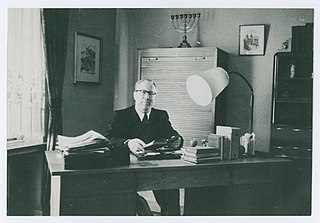Related Research Articles

Cologne is the largest city of Germany's most populous state of North Rhine-Westphalia (NRW) and the fourth-most populous city in Germany. With 3.6 million people in the urban region and 1.1 million inhabitants within its city proper, Cologne is the largest city on the river Rhine and also the most populous city of both the Rhine-Ruhr Metropolitan Region and the Rhineland. Centered on the left bank of the Rhine, Cologne is about 35 km (22 mi) southeast of NRW's state capital Düsseldorf and 25 km (16 mi) northwest of Bonn. It is classified as a GaWC Gamma+ world city.

The University of Cologne is a university in Cologne, Germany. It was the sixth university to be established in Central Europe and, although it closed in 1798 before being re-established in 1919, it is now one of the largest universities in Germany with more than 48,000 students. The University of Cologne was a university of excellence as part of the German Universities Excellence Initiative from 2012 to 2019.

Cologne Cathedral is a Catholic cathedral in Cologne, North Rhine-Westphalia, Germany. It is the seat of the Archbishop of Cologne and of the administration of the Archdiocese of Cologne. It is a renowned monument of German Catholicism and Gothic architecture and was declared a World Heritage Site in 1996. It is Germany's most visited landmark, attracting an average of 20,000 people a day. At 157 m (515 ft), the cathedral is currently the tallest twin-spired church in the world, the second tallest church in Europe after Ulm Minster, and the third tallest church in the world. It is the largest Gothic church in Northern Europe and has the second-tallest spires. The towers for its two huge spires give the cathedral the largest façade of any church in the world. The choir has the largest height to width ratio, 3.6:1, of any medieval church.
A Judensau is a folk art image of Jews in obscene contact with a large sow, which in Judaism is an unclean animal, that appeared during the 13th century in Germany and some other European countries; its popularity lasted for over 600 years.

Jewish emancipation was the external process in various nations in Europe of eliminating Jewish disabilities, e.g. Jewish quotas, to which European Jews were then subject, and the recognition of Jews as entitled to equality and citizenship rights. It included efforts within the community to integrate into their societies as citizens. It occurred gradually between the late 18th century and the early 20th century. Jewish emancipation followed the Age of Enlightenment and the concurrent Jewish Enlightenment. Various nations repealed or superseded previous discriminatory laws applied specifically against Jews where they resided. Before the emancipation, most Jews were isolated in residential areas from the rest of the society; emancipation was a major goal of European Jews of that time, who worked within their communities to achieve integration in the majority societies and broader education. Many became active politically and culturally within wider European civil society as Jews gained full citizenship. They emigrated to countries offering better social and economic opportunities, such as United Kingdom and the Americas. Some European Jews turned to Socialism, and others to Zionism.

The history of the Jews in Germany goes back at least to the year 321, and continued through the Early Middle Ages and High Middle Ages when Jewish immigrants founded the Ashkenazi Jewish community. The community survived under Charlemagne, but suffered during the Crusades. Accusations of well poisoning during the Black Death (1346–53) led to mass slaughter of German Jews and they fled in large numbers to Poland. The Jewish communities of the cities of Mainz, Speyer and Worms became the center of Jewish life during medieval times. "This was a golden age as area bishops protected the Jews resulting in increased trade and prosperity."
Jewish political movements refer to the organized efforts of Jews to build their own political parties or otherwise represent their interest in politics outside the Jewish community. From the time of the siege of Jerusalem by the Romans to the foundation of Israel the Jewish people had no territory, and, until the 19th century they by-and-large were also denied equal rights in the countries in which they lived. Thus, until the 19th century effort for the emancipation of the Jews, almost all Jewish political struggles were internal, and dealt primarily with either religious issues or issues of a particular Jewish community.

Johannes (Josef) Pfefferkorn (1469–1523) was a German Catholic theologian and writer who converted from Judaism. Pfefferkorn actively preached against the Jews and attempted to destroy copies of the Talmud, and engaged in a long running pamphleteering battle with humanist Johann Reuchlin.

Eduard Julius Friedrich Bendemann was a German-Jewish painter.

Victor von Carben (1422–1515) was a German rabbi of Cologne who converted to Catholicism and later became a priest. Victor endeavored to show his zeal for his new religion by writing against his former coreligionists.
Jewish disabilities were legal restrictions, limitations and obligations placed on European Jews in the Middle Ages. In Europe, the disabilities imposed on Jews included provisions requiring Jews to wear specific and identifying clothing such as the Jewish hat and the yellow badge, paying special taxes, swearing special oaths, living in certain neighbourhoods, and forbidding Jews to enter certain trades. In Sweden, for example, Jews were forbidden to sell new pieces of clothing. Disabilities also included special taxes levied on Jews, exclusion from public life, restraints on the performance of religious ceremonies, and linguistic censorship. Some countries went even further and outright expelled Jews, for example England in 1290 and Spain in 1492.
Necati "Neco" Arabaci is a Turkish businessman, criminal and high-ranking member of the Hells Angels, who was formerly active in Cologne, Germany and now lives in Turkey. In 2002 he was arrested in Germany for pimping, human trafficking, assault, extortion, weapons violations, and racketeering. He confessed during his trial in 2004 and was sentenced to nine years in prison. He was released in 2007 and deported to Turkey.

The history of the Jews in Cologne is conjectured to date back possibly as far as the late Roman Empire, and is officially documented from the period of the High Middle Ages. Over its history, the Jewish community of Cologne has suffered persecutions, many expulsions, massacres and destruction. The community numbered about 19,500 people before its dispersal, murders and destruction in the 1930s by the Nazis before and during World War II. The community has re-established itself and now numbers about 4,500 members. Because of its historical continuity, today's Jewish synagogue calls itself the "oldest Jewish congregation north of the Alps".
Adolf Kober was a rabbi and a historian.
Maximilien Joseph Moll (1813–1849) was a German labour leader and revolutionary. He was a pioneer of the German labour movement and a figure in early German socialism. Moll was an early associate of Karl Marx.

Andreas Gottschalk was a German physician. He was a member of the Cologne community Communist League. He was an exponent of the "Left" sectarian tendencies of the German working class movement. He founded and became president in April 1848 of the Cologne Workers Association, which he led until he got arrested in June of that year. He was released from jail in December. After spending a short time abroad, he returned to Cologne, where he worked as a doctor for the poor until his death in the fall of 1849 having the previous year been "cheered on by a crowd of 5,000, called for the establishment of a revolutionary committee"as part of the 1848 revolts. after contracting cholera himself.

Moses (Moshe) Hess was a German-Jewish philosopher, early communist and Zionist thinker. His socialist theories, led to disagreements with Karl Marx and Friedrich Engels.

TheJudensau at the choir stalls of Cologne Cathedral is a medieval, antisemitic wood carving at the side of one of the seats in the choir of Cologne Cathedral. It was produced between 1308 and 1311. It shows a Jews' sow, a folk art image of Jews in obscene contact with a large female pig, which in Judaism is an unclean animal. It is one of the oldest representations of this theme. Directly beside is another antisemitic motif, which is generally interpreted as an illustration of the blood libel legend. This combination is only known from one other case, a painting from the 15th century at the Old Bridge in Frankfurt.

Friedrich Boßhammer (1906–1972) was a German jurist, SS-Sturmbannführer and close associate of Adolf Eichmann, responsible for the deportation of the Italian Jews to extermination camps from January 1944 until the end of the war in Europe. He was arrested in West Germany in 1968 and stood trial. Boßhammer was convicted and sentenced to life imprisonment in April 1972 for his involvement in the deportation of 3,300 Jews from Italy, but died before he could serve time in prison.

Heribert Hirte is a German legal scholar and politician of the Christian Democratic Union (CDU) who has been serving as a member of the Bundestag from the state of North Rhine-Westphalia since 2013.
References
- ↑ Hirsch, Emil G.; Deutsch, Gotthard; Wolf, Albert (1906). "Engraving and Engravers". Jewish Encyclopedia . Retrieved 20 December 2019.
- ↑ Wacker, Bernd; Lauer, Rolf, eds. (2008). Der Kölner Dom und 'die Juden' (2, rev. ed.). Cologne: Kölner Domblatt. ISBN 978-3-922442-93-6.
- ↑ Kober, Adolf (1948). "Jews in the Revolution of 1848 in Germany". Jewish Social Studies . 10 (2): 135–64. JSTOR 4615300.